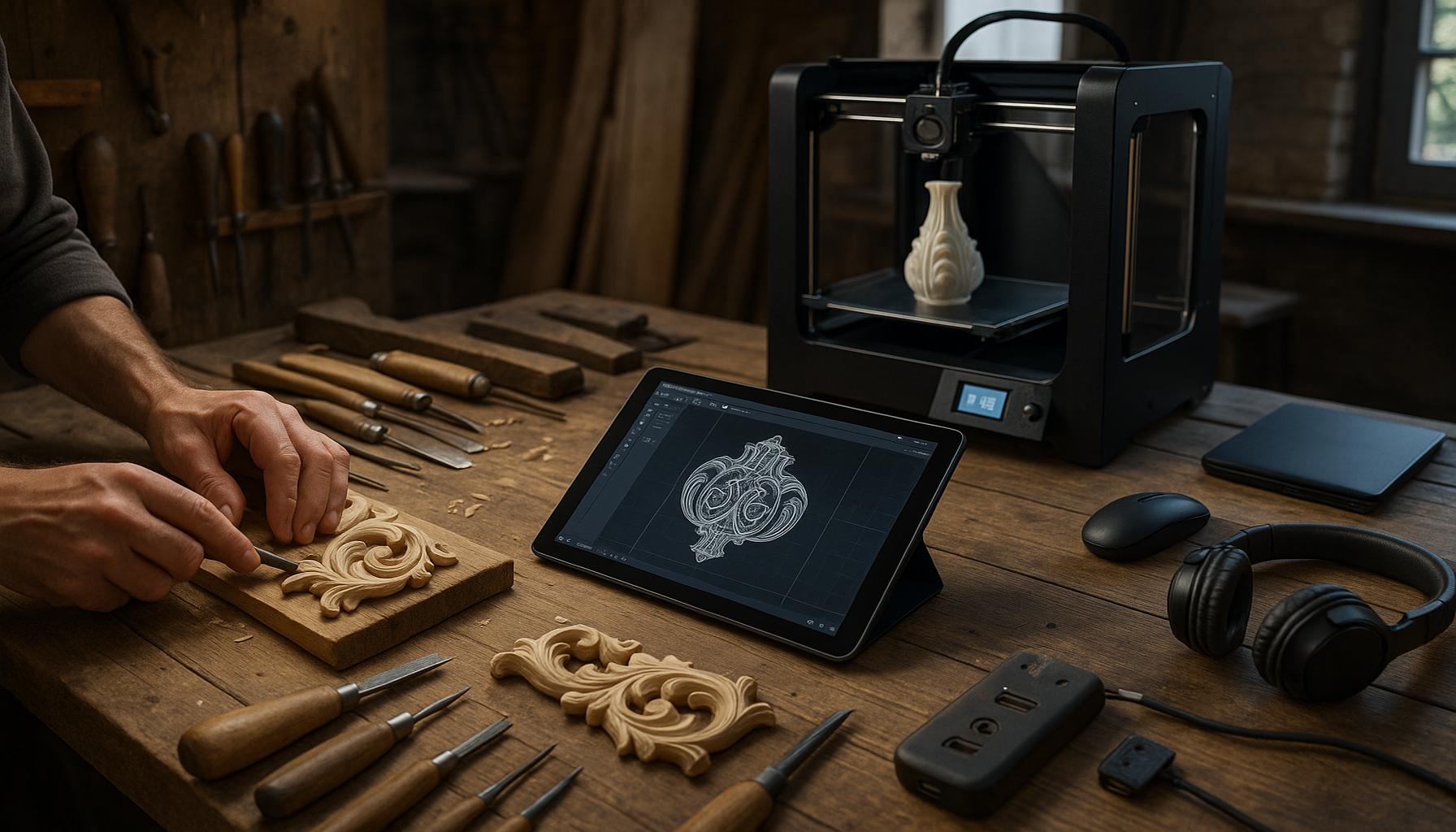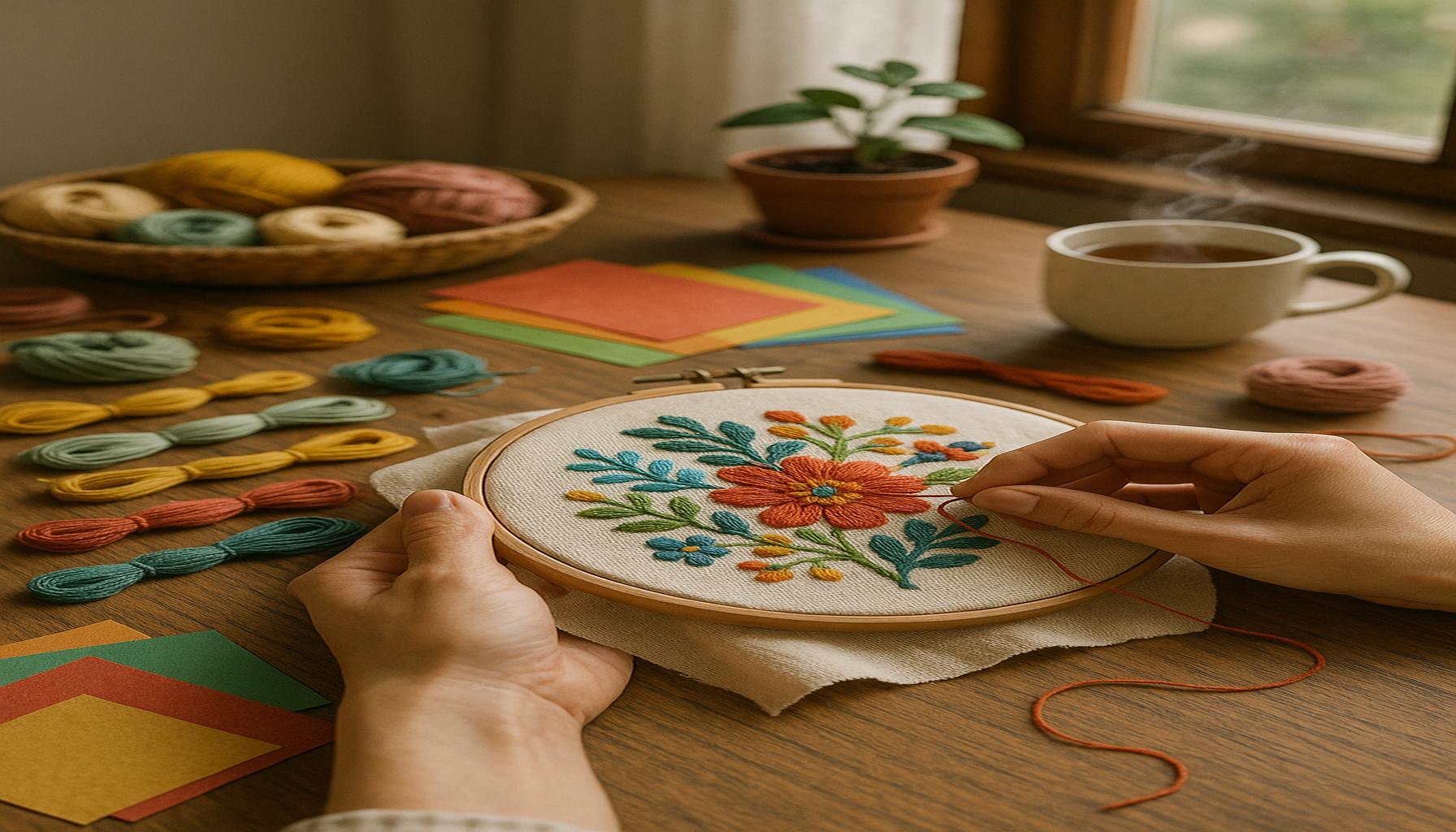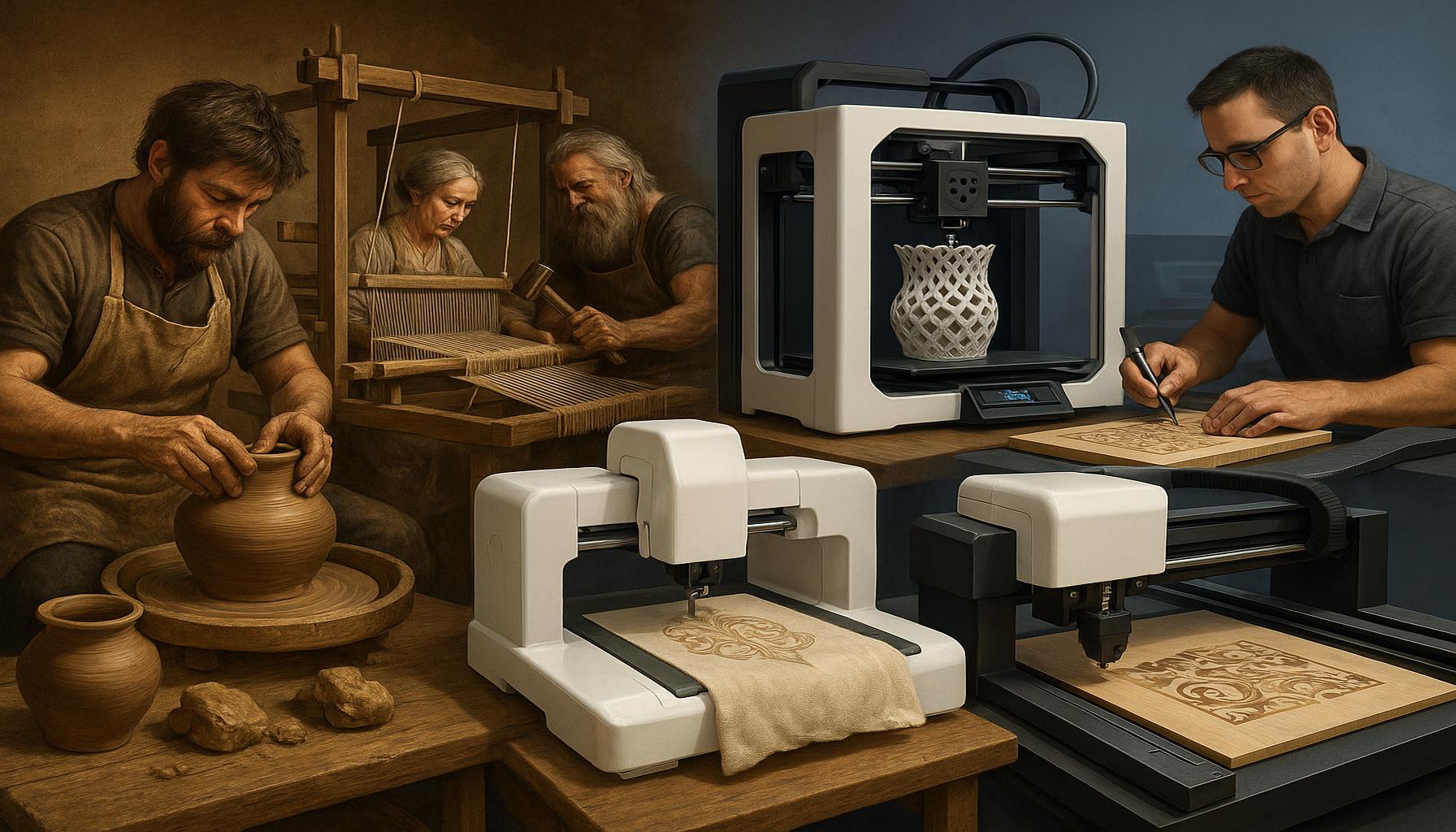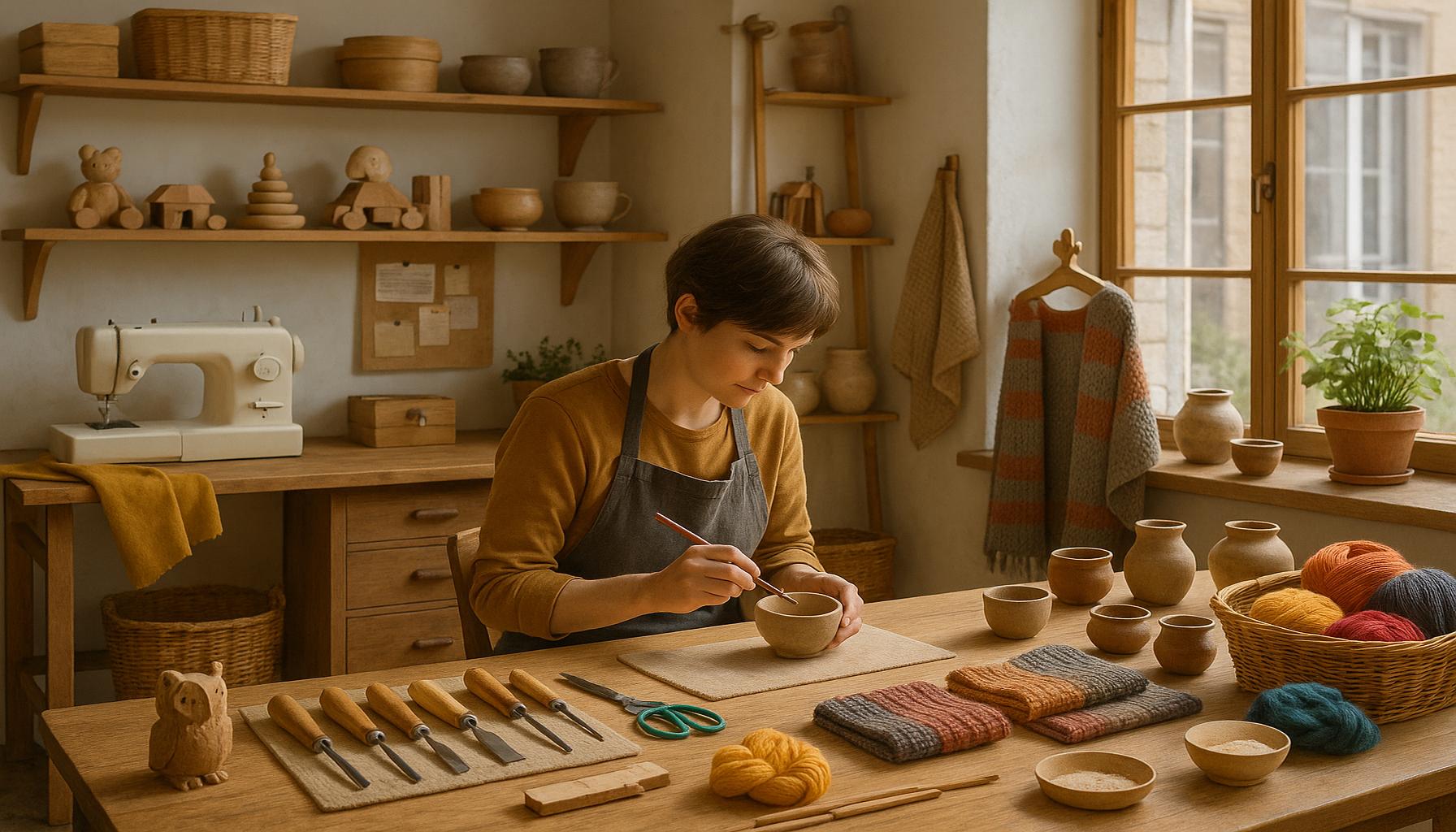Exploring the Intersection of Crafting and Technology: How Digital Tools are Shaping Modern Artisanship

Transformative Technologies in Crafting
As artisans continue to seek new ways to express their creativity, the fusion of traditional techniques with digital tools is making waves across various artistic domains. This integration not only broadens the scope of what can be achieved but also invites a diverse audience to engage with the arts in innovative ways. Here, we explore how specific technologies are reshaping the crafting landscape and what implications these changes hold for aspiring artists and seasoned professionals alike.
3D Printing: Redefining Creativity
3D printing has emerged as a groundbreaking tool, allowing artists to design and manufacture complex geometries that were previously unattainable through conventional methods. For instance, in the jewelry industry, designers can create delicate, intricate pieces that are customized and manufactured with precision. Companies like Shapeways provide platforms for artists to upload their 3D designs and have them printed in materials ranging from plastics to precious metals. This capability not only streamlines the production process but also reduces waste, aligning with sustainable practices that are increasingly valued in today’s marketplace.
Precision Crafting with Laser Cutting
Laser cutting is another revolutionary technology that has enhanced artistic expression. With the ability to cut through various materials, such as wood, acrylic, and fabric, with surgical precision, artists can produce detailed designs that reflect their unique vision. For example, fashion designers can use laser-cutting to create intricate lace patterns or personalized motifs on garments, elevating their designs to a new level of sophistication. Workshops like TechShop provide access to laser-cutting machines, enabling budding artisans to experiment and refine their skills without the hefty investment in equipment.
Complexity Unlocked by CNC Machines
CNC machines (Computer Numerical Control) facilitate the production of elaborate shapes and patterns in mediums like wood, metal, and plastic. This technology empowers craftsmen to achieve a professional finish on their products. For example, woodworkers can create stunning cabinetry with ornate designs that would be laborious and time-consuming if done by hand. Additionally, the precision offered by CNC machines allows artisans to replicate their designs consistently, paving the way for small businesses to scale operations without sacrificing quality.
The Role of Design Software
The role of digital software in the creative process is equally significant. Programs like Adobe Illustrator have become essential in graphic design, allowing artists to craft detailed patterns and prototypes effortlessly. Meanwhile, CAD software (Computer-Aided Design) is particularly influential in fields like architecture and jewelry. Jewelers can visualize their designs in a simulated space, adjusting elements before producing a physical piece. This process not only saves time but also encourages innovation as artists explore multiple design options.
Democratizing Art Through Technology
This merging of craft and technology is democratizing art, providing platforms and resources for everyone. Online tutorials and communities, such as YouTube and platforms like Skillshare, offer step-by-step guides on using these tools, enabling novices to develop their skills at their own pace. As a result, more people are gaining access to techniques once reserved for accomplished artisans, fostering a spirit of creativity and collaboration.
In summary, the infusion of digital tools in traditional crafting not only enhances the creative process but also transforms the way art is perceived and produced. As these technologies continue to evolve, they promise to further enrich the landscape of creativity, making it more inclusive and accessible. For anyone looking to explore the intersections of art and technology, the possibilities are virtually limitless.
DISCOVER MORE: Click here to dive deeper into emotional music composition
Embracing Innovative Techniques in Crafting
As the crafting community evolves, the adoption of advanced technologies is redefining the very essence of artisanship. By incorporating digital tools into their creative arsenal, artists are not only enhancing their productivity but are also expanding the horizons of what is artistically possible. The infusion of technology into traditional practices creates a dynamic landscape where creativity and innovation collide, leading to extraordinary outcomes. Let’s delve into the nuances of these technological advancements and explore how they serve as catalysts for modern artisanship.
The Influence of Digital Fabrication
Digital fabrication encompasses a range of processes and tools that allow artists to turn their ideas into reality with remarkable speed and accuracy. Techniques such as laser cutting, 3D printing, and CNC milling are benefitting artisans across various disciplines, from furniture design to textile art. For example, furniture makers can use digital tools to produce components that not only fit perfectly but also feature innovative designs that challenge traditional aesthetics. This intersection of functionality and artistry is enabling them to create personalized pieces tailored to individual tastes, resulting in a growing market for custom home décor.
Design Software Empowering Creativity
The advancements in design software cannot be overlooked, as they are instrumental in shaping modern artisanship. Tools like Adobe Creative Suite and SketchUp are becoming indispensable for artists, allowing them to visualize complex ideas and experiment with shapes, colors, and textures before any physical work begins. This virtual exploration aids in refining concepts and minimizes the risk of costly errors during production. Moreover, the ease of sharing digital designs on platforms like Pinterest and Behance further exposes artists to a broader audience, enriching the discourse around contemporary art forms.
Collaborative Platforms and Communities
The rise of *online platforms* that facilitate collaboration among artists has significantly widened access to crafting knowledge. Websites like Instructables and Makezine offer tutorial-rich resources that enable creators of all skill levels to learn from one another. The collaborative nature of these communities fosters an environment where seasoned artisans can share their expertise while newcomers can contribute fresh ideas and perspectives. As a result, an ecosystem of support and creativity emerges, enhancing the overall crafting landscape.
Key Technologies Shaping Modern Artisans
To summarize the impact of technology on crafting, here is a concise list of the key digital tools transforming the scene:
- 3D Printing: Enables the creation of intricate designs with minimal waste.
- Laser Cutting: Provides precision and detail in cutting various materials.
- CNC Machines: Allows for consistent and professional quality in production.
- Design Software: Facilitates visualization and experimentations of concepts.
- Collaborative Platforms: Builds community and sharing among crafters.
This convergence of crafting and technology not only revolutionizes the methods used by artisans, but also cultivates a vibrant and inclusive environment where creativity can thrive. As we continue to explore these developments, it becomes clear that the next generation of artisans is equipped with tools and resources that push the boundaries of traditional craftsmanship.
Exploring the Intersection of Crafting and Technology: How Digital Tools are Shaping Modern Artisanship
As we delve deeper into the fusion of traditional crafting with modern technology, it becomes evident that digital tools are not just enhancing artisanship, they are revolutionizing it. Crafting, once a labor-intensive process requiring immense skill and patience, is now complemented by innovative technologies such as 3D printing, CNC machining, and digital design software. These tools have opened new avenues for creators, enabling them to produce intricate designs that would have been unfeasible in a purely manual context. Adaptability is at the core of this transformation, allowing artisans to shift their methodologies while maintaining the integrity of their craftsmanship.
Moreover, the rise of online marketplaces has significantly expanded the reach of these modern artisans. Digital platforms like Etsy and social media channels allow creators to showcase their work to a global audience. This accessibility not only fuels creativity but also fosters connections between artists and consumers, allowing consumers to appreciate the unique stories and processes behind each piece. The blending of social media with craft has thus turned the act of creating into a shared experience, providing inspiration and motivation through a community-driven approach.
| Advantages | Impact of Digital Tools |
|---|---|
| Enhanced Creativity | Digital tools enable artists to experiment with designs beyond their physical limitations. |
| Increased Efficiency | Automation of repetitive tasks allows artisans to focus more on creativity and craftsmanship. |
One of the most promising aspects of this dialogue between crafting and technology is the potential for sustainability. Many artisans are increasingly adopting eco-friendly materials and practices to align their work with broader environmental goals. Access to digital tools enables them to devise innovative methods for using reclaimed materials or creating less waste in production. Ultimately, the intersection of crafting and technology not only educates but also empowers modern artisans to forge their paths, ensuring the relevance and vitality of the artisan culture in our rapidly evolving world.
DIVE DEEPER: Click here to uncover the secrets of artisan bread baking
Redefining Traditional Techniques with Smart Technologies
In recent years, the world of crafting has witnessed a transformative shift due to the incorporation of smart technologies. These innovative tools are redefining how artisans engage with their materials and processes, paving the way for a new era of creativity. As methods evolve, we see the emergence of substantial benefits that extend to both artists and consumers, including sustainability, enhanced customization, and greater efficiency.
Augmented Reality and Virtual Reality in Crafting
One of the most exciting advancements in technology is the use of augmented reality (AR) and virtual reality (VR)</strong) applications. These immersive tools allow artisans to visualize their creations in a virtual space, removing barriers related to traditional prototyping methods. For instance, a jewelry designer can use AR to project how a piece will look on a model before it is created, ensuring a better fit and design accuracy. In practical applications, furniture makers can employ VR to allow clients to ‘walk through’ a digital version of their space, providing real-time feedback and facilitating design decisions on custom pieces. This technology not only enhances client engagement but also streamlines the design process, yielding exceptional results in a shorter timespan.
Sustainable Crafting Methods
As the global conversation around sustainability grows louder, artisans are turning to digital tools to adopt eco-friendly practices. Technologies such as cutting-edge software can optimize the layout for production, reducing waste and ensuring materials are used efficiently. For example, fabric designers can use specialized programs that calculate the best arrangement for patterns to minimize leftover fabric. Furthermore, 3D printing enables artisans to utilize biodegradable materials, thus lessening environmental impact. This conscious integration of technology into crafting not only addresses consumer demand for sustainable products but also reinforces the role of artisans as stewards of the environment.
Global Reach Through E-commerce
The advent of e-commerce platforms has catalyzed a revolution in the way artisans market and sell their creations. Websites such as Etsy and <strong.Redbubble provide artisans with the ability to reach a global audience, breaking free from geographical constraints. This online marketplace facilitates the sale of unique handcrafted items, helping to connect consumers with artisans from various backgrounds and cultures. The result is a rich tapestry of creativity that celebrates diversity while promoting artisanship on a global scale. Moreover, social media channels like Instagram serve as crucial marketing tools, allowing artisans to showcase their work through visually appealing posts that attract potential buyers.
The Impact of Educational Technology
Digital tools are also reshaping the way skills are taught and acquired. Online platforms such as Skillshare and Udemy host a multitude of crafting courses, where both novices and seasoned artisans can learn new techniques or enhance existing skills. The democratization of knowledge in crafting not only empowers individuals but strengthens the community as a whole, ensuring that timeless skills are preserved and passed down. Furthermore, live streaming workshops and tutorial sessions foster interaction, creating a sense of belonging among artisans even in a digital landscape.
Data-Driven Approaches to Customization
Lastly, the use of data analytics is revolutionizing how artisans create customized products. By analyzing consumer preferences and trends, artisans can predict what styles and features will resonate with their audience. For instance, a ceramicist may use data insights to design a new line of dinnerware that aligns with current colors and patterns favored by consumers. This data-driven approach not only enhances customer satisfaction but also helps artisans devise strategies to remain competitive in an ever-evolving marketplace.
As these technological innovations continue to unfold, the future of artisanship appears promising. By leveraging these tools effectively, modern artisans are not merely preserving traditions but redefining them, setting the stage for a vibrant and innovative crafting culture.
DISCOVER MORE: Click here to enhance your watercolor skills
Conclusion: The Future of Artisanship in a Digital Era
As we navigate the dynamic landscape of crafting and technology, it becomes increasingly evident that digital tools are not merely enhancements; they are catalysts for a new wave of creativity and innovation in modern artisanship. From augmented reality and virtual reality applications that enhance the design process to sustainable practices that reduce the environmental footprint, these technological advancements are reshaping traditional methods. They empower artisans to create with precision, reach wider audiences, and cater to diverse consumer preferences through data-driven customization.
The rise of e-commerce platforms has transformed the marketplace, providing artisans with the means to operate globally, breaking down geographical barriers and creating a richer, more diverse tapestry of craftsmanship. The accessibility of online education platforms promotes skill development while fostering a sense of community among creators, ensuring the longevity of artisanal techniques.
As we look ahead, it’s clear that the intersection of crafting and technology will continue to evolve, compelling artisans to adapt and thrive in this ever-changing environment. The future promises not just the preservation of traditional practices but also an exciting redefinition of what it means to be an artisan in today’s world. As digital tools become further integrated into the craft, we encourage enthusiasts and creators alike to explore this innovative frontier and discover the vast possibilities it holds for the artistic expression of tomorrow.


